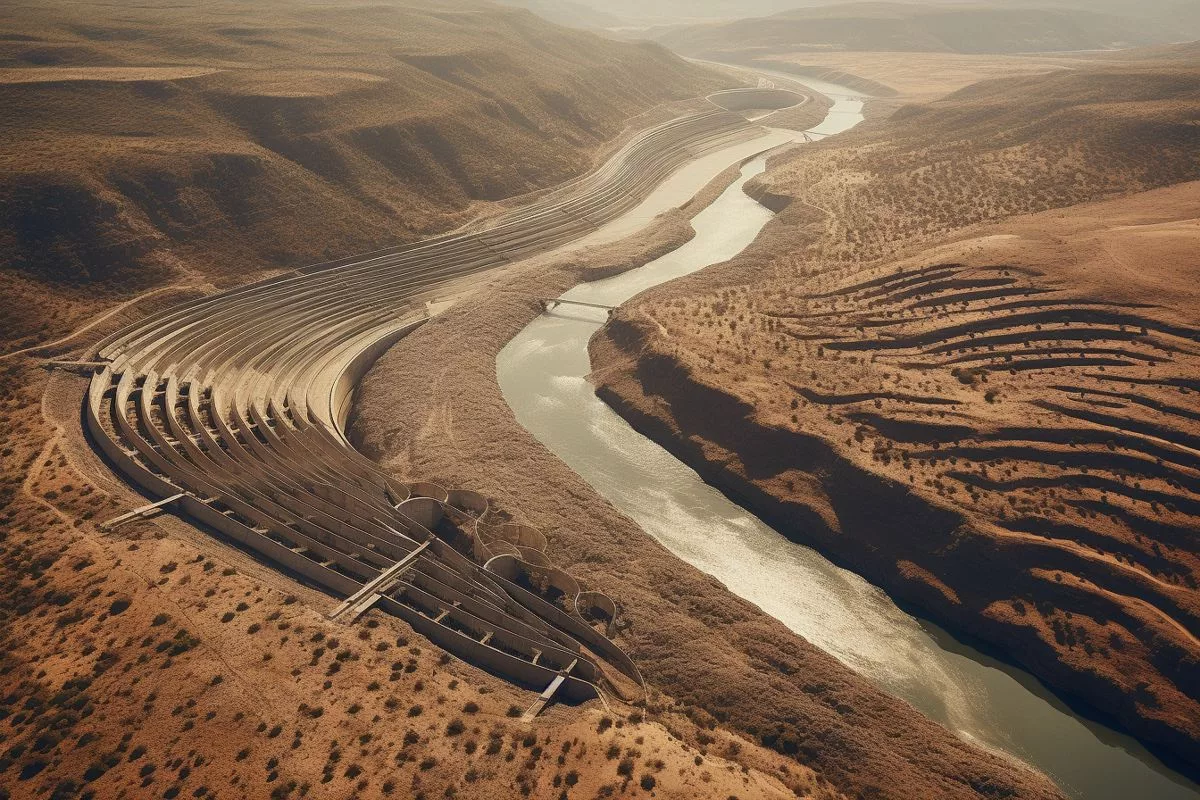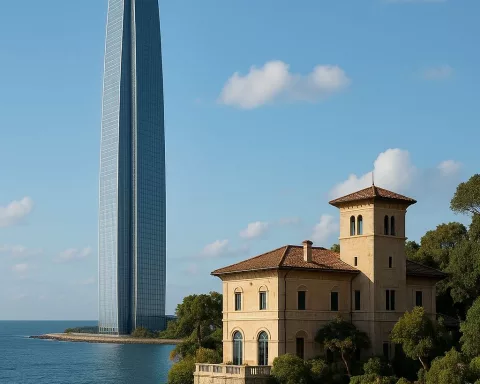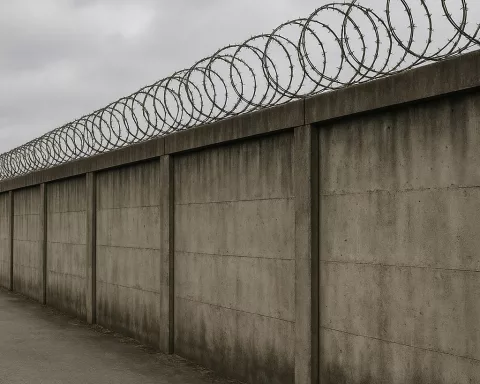The Department of Water and Sanitation’s weekly reservoir status report shows a slight increase in water levels in Mpumalanga Province, South Africa, from 90.6% to 90.7% on November 13, 2023. However, the water situation in the region is complex, with some districts experiencing a decline in water levels while others saw a significant increase. This data highlights the ongoing struggle with water scarcity in South Africa and the importance of responsible water usage. It also reminds us of our inherent responsibility towards water conservation and the vulnerability of our natural resources.
What is the current state of water levels in Mpumalanga Province, South Africa?
Recent statistics from the Department of Water and Sanitation’s weekly reservoir status report show a slight increase in the average water levels in Mpumalanga Province from 90.6% to 90.7% on November 13, 2023. However, the water situation in the region is complex, with some districts experiencing a decline in water levels while others saw a significant increase. The data serves as a reminder of South Africa’s ongoing struggle with water scarcity and the importance of responsible water usage.
A Glimmer of Hope Amidst Water Scarcity
The vital role of water for survival is well-recognized, yet often overlooked. In areas such as Mpumalanga Province, South Africa, where access to water is severely limited, every small increase in water reserves is significant and worthy of recognition. Recent statistics from the Department of Water and Sanitation‘s (DWS) weekly reservoir status report bring a careful optimism.
On November 13, 2023, the DWS noted a slight rise in the average water levels in Mpumalanga Province from 90.6% to 90.7%. This seemingly insignificant shift mirrors substantial progress in many dams in the Nkangala District and a few in the Ehlanzeni and Gert Sibande districts.
However, the Water Management Areas (WMAs) in the region reveal a more complex scenario. The Olifants WMA, which encompasses the Nkangala district, experienced an increase in water levels from 84.1% to 84.4%. On the other hand, the Inkomati-Usuthu WMA, encompassing the Ehlanzeni and Gert Sibande districts, saw a slight decrease in water levels from 91.6% to 91.5%.
A Detailed Overview: District-Level Water Levels
The district-specific data provides a captivating scenario. There was a decline in water levels in the Gert Sibande District from 86.9% to 86.7%, similar to Ehlanzeni, which decreased from 91.8% to 91.6%. In contrast, the Nkangala District showed a significant increase in water levels from 95.4% to 96.3%.
Within the districts, there were substantial differences in the water levels in the respective dams. In the Ehlanzeni District and the Lowveld, numerous dams, including Blyderivierpoort, Klipkopjes, Kwena, Da Gama, Inyaka, and Ohrigstad, recorded a decrease in water levels. However, the other dams in the Lowveld, such as Buffelskloof, Driekoppies, Longmere, Witklip, and Primkop, observed an increase in water levels.
The situation in the Gert Sibande District was less uniformly positive. Most of its listed dams experienced a decrease in water levels, with the exceptions of Jericho and Heyshope dams, which exhibited a slight improvement. The water level at Vygeboom Dam, however, remained constant at 100.9%.
In a positive outcome for the province, all listed dams in Nkangala District, including Witbank Dam, Middelburg Dam, Loskop Dam, and Rhenosterkop/Mkhombo, experienced increased water levels, indicating a significant improvement in the district’s water situation.
The Ongoing Struggle with Water Scarcity
This data, offering a glimpse into the water situation in the region, serves as a stark reminder of South Africa’s ongoing struggle with water scarcity. Despite the marginal improvement in the average dam levels in Mpumalanga Province, DWS has urged South Africans to continue to be mindful and conservative in their water usage.
In a nation where access to water is a critical issue, every drop of water has immense value, and there is no alternative for water. Therefore, it is incumbent upon every individual to contribute to water security, to use water responsibly and sparingly, and to view water conservation as a duty, not merely a decision.
This message extends beyond South Africa’s borders, reminding all of us of our inherent responsibility toward water conservation. It highlights the vulnerability of our natural resources and the vital role collective action plays in preserving these resources. While the rise in Mpumalanga’s water levels is a promising sign, it also serves as a reminder that the journey towards water security is a long and ongoing one, demanding everyone’s involvement.
The slight changes in Mpumalanga’s water situation, as shared by the DWS, reflect the resilience of natural systems and the potential influence of careful resource management. Most importantly, they urge us to continue working towards sustainable water usage, for the welfare of our planet and future generations.
1. What is the current state of water levels in Mpumalanga Province, South Africa?
Recent statistics from the Department of Water and Sanitation’s weekly reservoir status report show a slight increase in the average water levels in Mpumalanga Province from 90.6% to 90.7% on November 13, 2023. However, the water situation in the region is complex, with some districts experiencing a decline in water levels while others saw a significant increase.
2. What is the significance of the slight increase in water levels in Mpumalanga Province?
In areas such as Mpumalanga Province, South Africa, where access to water is severely limited, every small increase in water reserves is significant and worthy of recognition. The recent statistics from the Department of Water and Sanitation’s weekly reservoir status report bring a careful optimism.
3. What is the Water Management Areas (WMAs) in the region?
The Water Management Areas (WMAs) in the region are Olifants WMA, which encompasses the Nkangala district, and Inkomati-Usuthu WMA, encompassing the Ehlanzeni and Gert Sibande districts.
4. What is the district-specific data about water levels in Mpumalanga Province?
The district-specific data in Mpumalanga Province provides a captivating scenario. There was a decline in water levels in the Gert Sibande District and Ehlanzeni, while the Nkangala District showed a significant increase in water levels. Within the districts, there were substantial differences in the water levels in the respective dams.
5. What is the message of the data about water levels in Mpumalanga Province?
This data, offering a glimpse into the water situation in the region, serves as a stark reminder of South Africa’s ongoing struggle with water scarcity. It highlights the vulnerability of our natural resources and the vital role collective action plays in preserving these resources. While the rise in Mpumalanga’s water levels is a promising sign, it also serves as a reminder that the journey towards water security is a long and ongoing one, demanding everyone’s involvement.
6. What is the importance of responsible water usage in South Africa?
In a nation where access to water is a critical issue, every drop of water has immense value, and there is no alternative for water. Therefore, it is incumbent upon every individual to contribute to water security, to use water responsibly and sparingly, and to view water conservation as a duty, not merely a decision.








